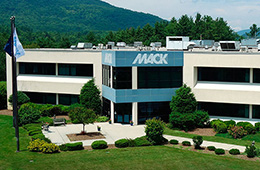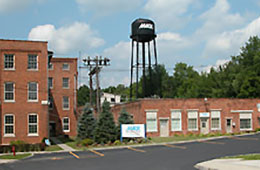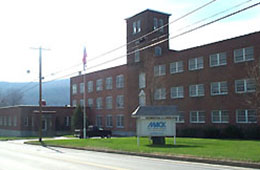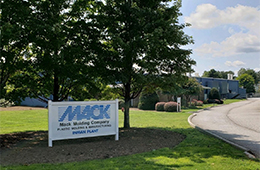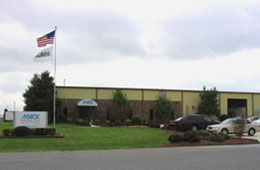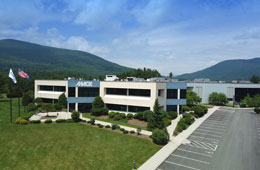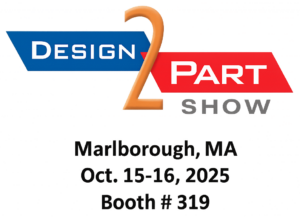CASE STUDIES
Mack Molding
Mack Prototyping Case Studies: Adapting to Advancing Technologies
Mack Group
Mack Prototype, Inc. is a wholly-owned subsidiary of Mack Group, a privately-held corporation with 11 locations throughout the eastern United States and Mexico. Mack Prototype complements Mack’s growing list of vertically integrated services. This includes product design and development, custom injection molding, sheet metal fabrication, full-service machining, printed circuit board assembly, and total product assembly & order fulfillment.
As experts in rapid prototyping, Mack Prototype, Inc. continues to adapt to advancing technologies. They specialize in Stereolithography (SLA), Fused Deposition Modeling (FDM) and CNC Machining. These three technologies vary greatly in use and end part results. For about five years, Mack Prototype offered Stereolithography (SLA), which uses a vat of liquid ultraviolet curable photopolymer “resin” and an ultraviolet laser to build parts’ layers one at a time. For each layer, the laser beam traces a cross-section of the part pattern on the surface of the liquid resin. Exposure to the ultraviolet laser light cures and solidifies the pattern traced on the resin and joins it to the layer below. A complete 3D part is formed by this layering process. After being built, parts are immersed in a chemical bath in order to be cleaned of excess resin and are subsequently cured in an ultraviolet oven.
FDM
Fused Deposition Modeling (FDM) technology is a powerful Stratasys-patented additive manufacturing method. FDM builds concept models, functional prototypes and end-use parts in standard, engineering-grade and high-performance thermoplastics. It’s the only professional 3D printing technology that uses production-grade thermoplastics, so parts are unrivaled in mechanical, thermal and chemical strength. For these reasons, Mack Prototype President Ric Perry explained their move away from SLA, using FDM as their 3D print technology of choice.
“We had SLA, but we found that FDM better complements our other services, such as CNC machining,” says Perry. “We also use FDM for master patterns, as well as machine master patterns for RTV rubber molds. From the rubber molds, we can produce polyurethane parts. We also have injection molding up to 230 tons, full painting and finishing capabilities, as well as EMI and RFI shielding.”
3D Printing
 Mack Prototype, Inc. uses the FORTUS 400mc 3D printer to build their FDM parts. It prints layer-by-layer by heating thermoplastic material to a semi-liquid state and extruding it according to computer-controlled paths. FDM uses two materials to execute a print job: modeling material, which constitutes the finished piece, and support material, which acts as scaffolding. Material filaments are fed from the 3D printer’s material bays to the print head, which moves in X and Y coordinates, depositing material to complete each layer before the base moves down the Z axis and the next layer begins. Once complete, the user breaks the support material away or dissolves it in detergent and water, and the part is ready to use.
Mack Prototype, Inc. uses the FORTUS 400mc 3D printer to build their FDM parts. It prints layer-by-layer by heating thermoplastic material to a semi-liquid state and extruding it according to computer-controlled paths. FDM uses two materials to execute a print job: modeling material, which constitutes the finished piece, and support material, which acts as scaffolding. Material filaments are fed from the 3D printer’s material bays to the print head, which moves in X and Y coordinates, depositing material to complete each layer before the base moves down the Z axis and the next layer begins. Once complete, the user breaks the support material away or dissolves it in detergent and water, and the part is ready to use.
CNC Machining
Both SLA and FDM are considered Additive Manufacturing, based on the successive layering of the materials. CNC Machining is considered Subtractive Manufacturing, where material is removed from a work piece with Computer Numerical Control (CNC) equipment. Machined directly from 3D CAD models, machining is possible on virtually any material and suits larger scale projects.Perry described the benefit of having the wide variety of options for customers:
“You’re going to see other companies that have maybe more Stereolithography (SLA), Fused Deposition Modeling (FDM) or machining,” adds Perry, “but not a lot of them have all these processes under one roof. We have Fused Deposition Modeling, plus we do a lot of CNC machining and end-use plastics.”
Experience
Mack Prototype has extensive experience in a variety of markets including electronics and medical. They are certified with international quality standards ISO 9001 and ISO 13485 for medical device manufacturing. Because their customer base comes from various industries, Mack Prototype focuses on each part in every project sent to them, deciding on the proper approach for each individual part.
“I think one of the important things that Mack Prototype brings to the table in new product development is having all of these processes under one roof,” says Perry. “We’re not trying to steer everybody into FDM or machining; we tend to work projects well. Because you have 8, 10, 12 parts in a project, some of them may be better suited to FDM, others may need to be machined, and cast urethane may work on others. But if you need a specific material, we may have no choice other than to build a low volume injection mold to get you where you need to be. I think that is what distinguishes Mack — we like project work and we try to recommend the best approach for each individual part.”
Adding FDM as a service was a no-brainer to Perry and the team at Mack. The end-use plastics such as ABS, medical grade ABS, PC-ABS, Polycarbonate, and Ultem are well known by engineers for their properties, and the technology complements the CNC machining they offer. Besides building rapid prototypes, Perry explained how FDM offers a little more than Stereolithography:
“We found that besides being very good for fixtures when we’re doing secondary operations such as ultrasonic, [FDM] also makes a much better master pattern than the SLA did. The master patterns are more robust; we can use them more than once. Many times the SLAs would break getting them out of the rubber mold, so FDM has proven to be very successful for us. And the Fortus machines have been extremely reliable.”
Finishing & Painting
With Mack Prototype’s full finishing and painting capabilities, they are able to take FDM parts, vapor polish and finish them, creating durable prototypes of end-use parts. SLA parts can be painted, but are prone to cracking and breaking, where the FDMs are very robust.
Mack Prototype added the Stratasys Fortus 400 from CAPINC to their facility to provide a new technology option for their customers. The investment proved successful when the functional prototypes and end-use parts in standard, engineering-grade and high-performance thermoplastics produced by the Fortus became a more cost effective alternative to Stereolithography. Mack Prototype has trusted CAPINC and their service offerings for many years and Perry doesn’t see that changing anytime in the near future.
“The President of CAPINC, Dana Seero, and I have worked together for many years, over which we’ve developed a mutual, professional trust. His word means something, and that goes a long way with me.”
For more information about Mack Prototyping Case Studies, contact files@mackprototype.com.

